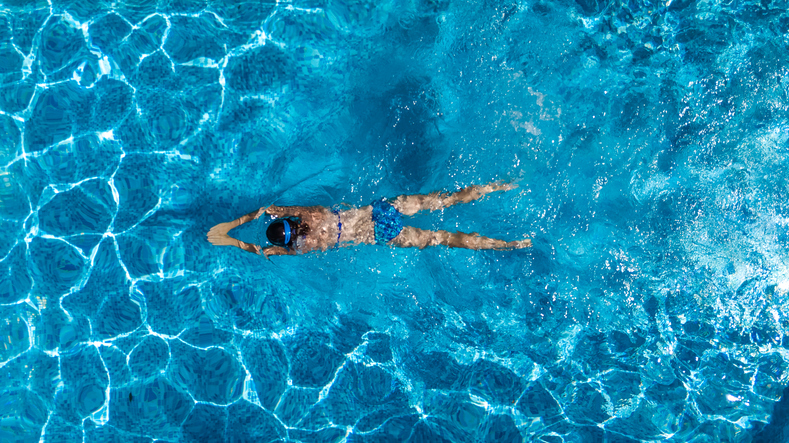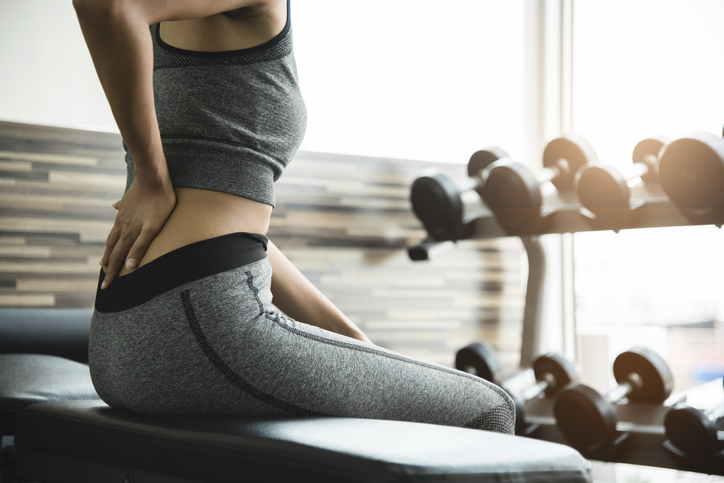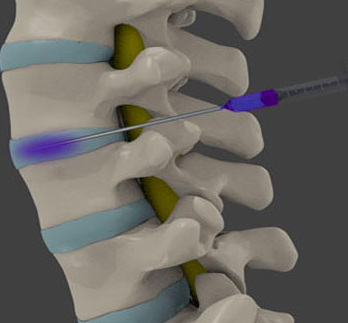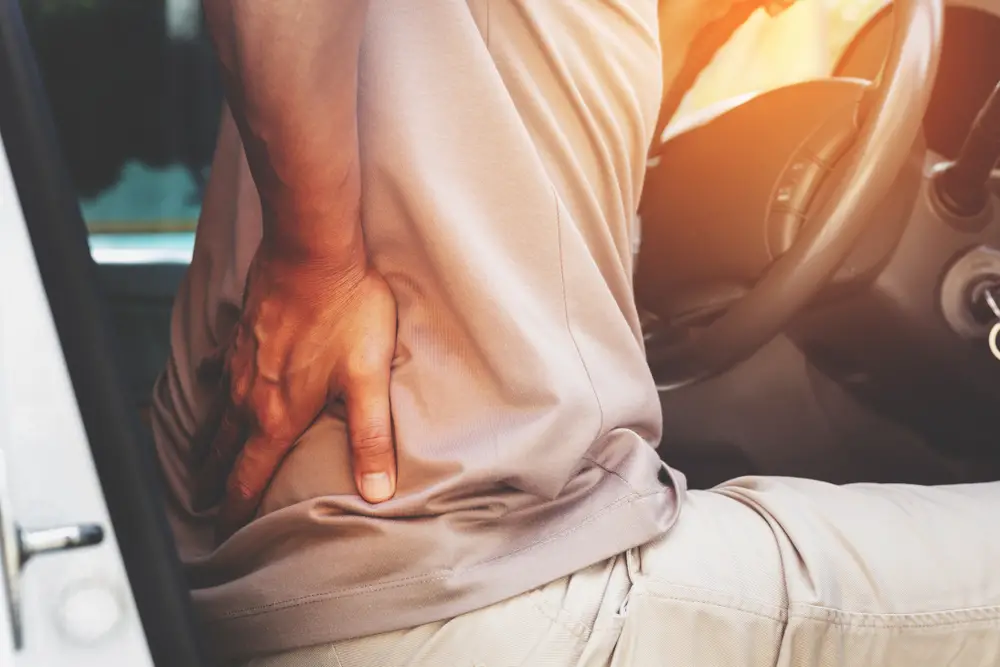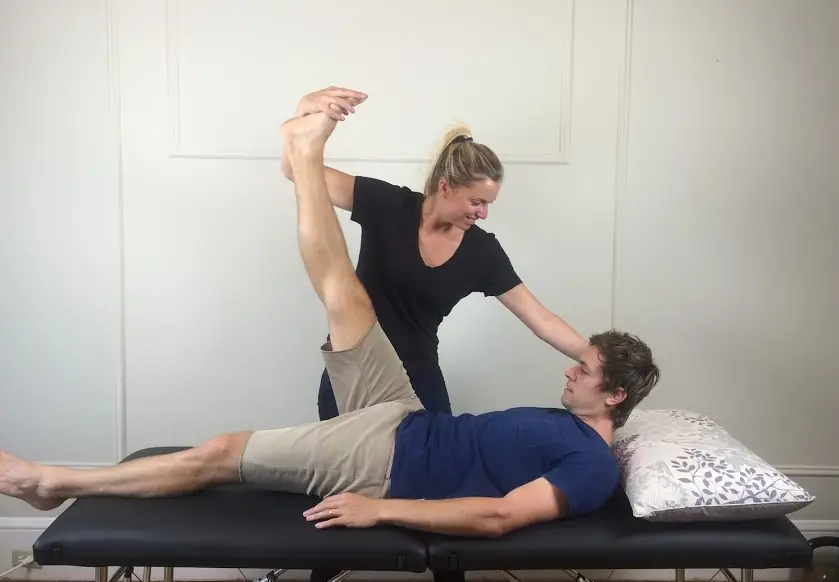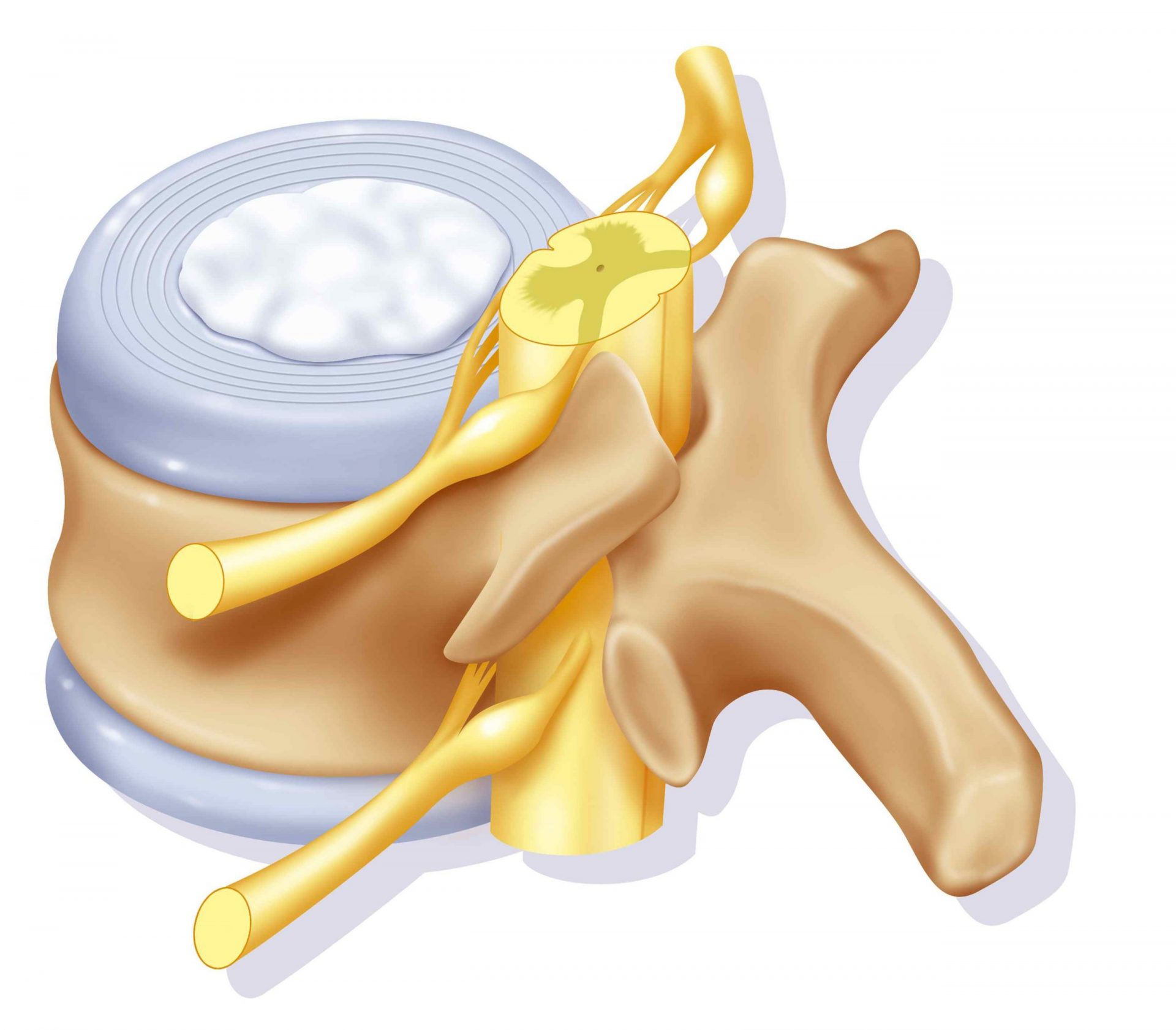Article reviewed and approved by Dr. Ibtissama Boukas, physician specializing in family medicine
It's no longer a secret. Physical activity is essential for good back health. Herniated disc and sports go hand in hand. Yes, yes, I assure you ! This is even demonstrated by a panoply of scientific research.
I know, it may seem strange to some, especially if you feel more pain during certain movements. We will see together why and how physical activity can help you heal your herniated disc. We will also answer the most frequently asked questions when it comes to playing sports with disc disease.
What sports can be practiced after a herniated disc? On the contrary, which ones are prohibited? How to return to sport in a safe and optimal way after a herniated disc? This article tells you everything you need to know about it.
Note: Above all, it is essential that you familiarize yourself with the diagnosis of herniated disc. To know everything about this condition (symptoms, subtleties of diagnosis, treatment approaches), I strongly recommend that you see the following article.
Why remain active in the presence of a herniated disc?
The first reflex following an episode of herniated disc is to rest until the pain subsides. Admittedly, this strategy can sometimes be effective, but it must be understood that it will not help solve your problem in the long term.
Many of my patients preferred to rest after an acute episode, only to find that the pain returned (even more intense!) after a few months.
Why should inactivity be avoided when suffering from back pain? To answer that question, let's first look at the ill effects of prolonged rest following a herniated disc (or any injury, for that matter!):
Adverse Effects of Prolonged Rest
- Cardiovascular and cardiorespiratory deconditioning
- Joint stiffness and joint contractures
- Muscle atrophy
- Loss of bone density
- Decreased proprioception
- Depression and anxiety
- Professional and social life disrupted
Thus, it is easy to understand that excessive rest can have harmful consequences on the back, but also on the body in general.
For this reason, this strategy must be avoided at all costs, regardless of the level of pain! Easy to say, I know, but the following sections will keep you active without making your symptoms worse.
Now, why remain active in the presence of a herniated disc? To understand this concept, let's first look at the general benefits of physical exercise on the human body:
- Stimulates blood circulation
- Lubricates joints
- Promotes healing
- Optimizes oxygenation of the body
- Limits the loss of cardiovascular capacity
- Maintains muscle activity
- Promotes weight loss
- Improves mood and motivation
- Reduces general stress
- Improves body image
- Increases overall energy level
- Improves quality of sleep
By studying this list, it is easy to understand that physical activity is conducive to optimal healing of your condition. You just have to find a way to be active in a safe and progressive environment. Read on to get your questions answered.
How to stay active in the presence of a herniated disc?
Sometimes absolutely no movement is tolerable in the presence of a herniated disc. Doctors then prescribe powerful pain medications, and a complete rest.
However, these situations are relatively rare. And even in these extreme cases, the observed rest should still be as short as possible! The rest of the time, it is better to opt for a relative rest.
Simply explained, it is sufficient to initially avoid movements that aggravate pain and inflammation (especially in the acute phase), without stopping all activity.
To do this, it is necessary to limit aggravating movements (for example, sudden movements and excessive twisting). But that doesn't mean you can't move other limbs that aren't affected by back (or leg) pain.
Several studies have shown that those who remain assets following an episode of low back pain generally healed faster. So continue with your usual activities as much as possible. Go to work. Don't miss your daily walk. Cook your next meal. Trust me, your back will thank you!
Progressive overload
When the pain related to the herniated disc is reduced, or the inflammatory phase is under control, nothing prevents us from stimulating the lumbar region in a controlled and progressive environment. This is the logical continuation of the concept of relative rest, which is called “progressive overload”.
Here's the #1 secret to not making your condition worse, and optimize the healing of your back. You have to start the sport at a minimal intensity and frequency, then progress these parameters while respecting your level of pain. After each movement performed, reassess the situation and ensure that there is no increase in pain that persists despite a period of rest.
Over time, you will be able to do more and more without making your symptoms worse, and you will therefore reduce the risk of recurrences.
I assure you that this process has enabled me to help hundreds of patients who have suffered from disc disease for years! I particularly remember Sophie. Having struggled with a herniated L5-S1 disc for over 5 years, she saw no light at the end of the tunnel, and was even skeptical that she could get better.
On the other hand, after a few weeks where we respected the principles of progressive overload (it requires a lot of effort and adjustments, let's face it!), Sophie began to notice progress that was reflected in her daily activities.
After a few months, her pain was gone, and she had regained confidence in her back and her abilities. She even managed to resume the golf, his favorite sport. I can not describe the joy that could be read on his face ... Sophie finally revived!
5 sports proposals
Like Sophie, do you want to return to sport after being diagnosed with a herniated disc? Here is a proposal of 5 sports favoring the cure of your condition. Indeed, these hobbies, if applied correctly, allow effective and even therapeutic physical activity.
As explained in the infographic above, here are 5 sports to consider after being diagnosed with a herniated disc. Of course, your healthcare professional will explain to you how to dose these activities so as not to aggravate your symptoms:
1. Walking
Walking is one of the least taxing activities of stress to the body. As you can choose your speed from works, it is always possible to make the necessary adaptations so as not to aggravate his herniated disc.
In addition to the speed, it is also possible to adjust the inclination (either by walking in the mountains or by increasing incline on a treadmill).
Finally, he is possible to adjust the walking time to be sure that you stay in "non-dangerous" areas (whether for your heart or your back!).
APlease note: In some cases, back pain is aggravated by walking due to the extended posture of the spine ! If you ever try walking, and see an increase in your pain despite the adjustment of the parameters mentioned above, you must consult at all costs!
2. The bicycle
Cycling reduces stress on the joints (for example, the vertebrae lumbar, but also the knees if you suffer from significant osteoarthritis ou other joint problem at this level). Also, the bike helps maintain your cardiovascular capacity following your back injury (essential to avoid adverse effects of prolonged rest).
In addition to working your cardio, pedaling will activate your blood circulation necessary for optimal healing of your condition. It is best to cycle on a stationary device initially to maintain a safe environment. As with walking, it is possible to adjust certain parameters to protect your back (speed, resistance, saddle position, intervals, etc.).
Beware though: In some cases, back pain caused by herniated disc is aggravated by cycling due to the flexed posture of the spine! If you ever try cycling, and see an increase in your pain despite the adjustment of the parameters mentioned above, you must consult at all costs!
3. Swimming
4. Yoga and Pilates
Both yoga and Pilates have experienced a huge gain in popularity in recent years. Good similar, these two disciplines also have differences. Before naming them, it is necessary to understand that there are many variations to these disciplines, especially when it comes to yoga.
In general, Pilates emphasizes muscle strengthening and motor control (with particular emphasis on the trunk). For its part, yoga promotes poses aimed at improving flexibility by integrating a more “spiritual” component.
Together, yoga AND Pilates integrate exercises aimed at strengthening the trunk, softening the muscles and relaxing the body. Besides, a few studies demonstrated that these disciplines could be beneficial in the population suffering from chronic low back pain.
There is, however, a nuance that is essential to express: As there is no specific license required to teach yoga and Pilates, it is difficult to recommend these approaches systematically.
Similarly, many instructors lack the anatomical and biomechanical knowledge necessary to understand and effectively manage herniated discs.
For example, a trained professional will be able to adjust certain poses based on diagnosis and symptomatology, which can drastically decrease the risk of injury.
5. Therapeutic exercises
If you see a therapist (like a physio), they will prescribe certain exercises based on their assessment, your stage of healing, and your interests. These incorporate several essential elements for optimal back health.
Whether it's flexibility, mobility, strength or stability, a qualified professional will guide you through safe and effective exercises.
Prohibited sports: What to avoid
Certainly, the main objective of this article is to make you realize the importance of being active when suffering from a herniated disc. On the other hand, there are certain situations where exercise is not the solution. On the contrary, it can even be harmful in some cases!
If you ever experience any of the following symptoms, you must consult your doctor (and not engage in a sport by ignoring your symptoms and hoping that your symptoms will subside on their own!):
- Pain following a violent trauma (such as a fall from a height or a road accident).
- Constant, progressive, non-mechanical pain (i.e. not influenced by movement or rest).
- Chest pain or severe abdominal.
- Nocturnal pain not relieved by change of position.
- Chronic corticosteroid intake.
- Unexplained weight loss, often associated with chills and fever.
- Sensory impairment of the perineal region (called saddle anesthesia)
- Urinary incontinence of recent onset.
Now, what sports should be avoided in the presence of a herniated disc? To answer this question, one must first understand some key concepts.
First, the pain caused by a sport or any exercise is most often related to an inability of your body to support the requested load. In other words, your lack of strength, stability and/or flexibility can cause a particular movement to cause pain when you perform it.
So what are the sports to avoid? The answer is unfortunately very complex insofar as, with some exceptions, there is no “bad” sport as such!
Some sports require movements that increase the pressure on the discs, such as movements involving bending and twisting your trunk (tennis, golf, combat sports, etc.).
Other sports put more pressure on the joints of the spine (facets), such as hyperextension movements (gymnastics, weightlifting, etc.).
Depending on the fragility of your tissues, certain sports should be adapted – or temporarily avoided – so as not to worsen your symptoms.
In general, your body will show pain if you irritate a structure that is fragile. The key is to take it gradually and make sure you don't cause lingering post-exercise pain.
If you want to know other mistakes to avoid in the presence of a herniated disc (including 8 deadly sins frequently committed!), see the following article.
Rehabilitation after a herniated disc
Once the diagnosis of herniated disc has been made, it's time to focus on treatment approaches aimed at reducing pain and getting back to normal life. On the one hand, the doctor will prescribe a series of treatments depending on the condition of his patient. Here is an article that offers 10 solutions to herniated disc:
Herniated disc treatment: 10 solutions to consider
One of these solutions is the rehabilitation of the herniated disc (often accompanied by a physiotherapist). The goal will be to resume activities (including sport) in a safe, progressive and optimal way. Here is the sequence generally followed when it comes to returning to sport after a herniated disc:
1. Control inflammation and pain after back pain
A back problem can occur traumatically or gradually. In general, more serious damage causes more inflammation and pain (there are obviously exceptions that are beyond the scope of this article!).
So, following a painful episode, the first thing to do is to control the pain and inflammation. Logical, right? If this phase is neglected and the lumbar region is overstretched, multiple relapses and non-optimal healing may follow.
To reduce pain, there are "natural" methods such as ice, heat, manual therapy performed by a qualified therapist, and certain machines for therapeutic purposes.
In more extreme cases, it is sometimes necessary to resort to medications (painkiller, anti-inflammatory, muscle relaxants, anti-epileptics, etc.).
2. Regain mobility in athletes
After a symptomatic disc herniation, an inflammatory process generally follows, responsible for the lumbar stiffness felt. Thus, before being able to progress towards more dynamic activities, it is necessary to find the complete articular amplitudes.
This includes spinal movements in all directions, such as leaning forward and arching the back backwards. It also includes multi-planar movements, that is to say combinations of movements such as bending and twisting simultaneously.
Finally, in addition to range of motion, you also need to be able to move at different velocities. As sudden movements are often painful after an acute episode, it is necessary to be able to move the trunk with ease in different contexts. This will be crucial when the time comes to resume sporting gestures, and physical activities in general.
To regain full range of motion, there are several mobility and stretching exercises aimed at improving flexibility. A qualified therapist can also perform joint mobilizations and manipulations, in addition to releasing tight muscles.
3. Activate stabilizing muscles after back pain
Following a herniated disc, it often happens that certain stabilizing muscles of the trunk (the best known is the transverse abdominal) are inhibited. For example, some scientific studies have shown that those who suffer from chronic low back pain have a decrease in the thickness of the transverse abdominis muscle (Hosseinifar et al 2013).
OI also noticed that the transverse abdominal muscle showed reduced activity when pain was present. In addition, other studies have shown that the transverse muscle contracts with a DELAY in individuals with back problems compared to those without back problems! (Davies P et al 2016).
We can therefore think that your stabilizing muscles are affected following a back injury. This is especially true if the condition is chronic. If these muscles are not contracting at the optimal time when doing more “risky” activities (such as contact sports), the stress caused by the activity will therefore be absorbed by your vertebrae… and not by your “protective” muscles. " back !
There are different exercises aimed at recruiting the deep stabilizing muscles. The objective is to integrate them into more “functional” activities as soon as possible so that they have a tangible meaning.
4. Strengthen key muscles (progressive weight-bearing)
Do not stop to strengthen the abdominals only after a herniated disc. Indeed, to limit the loss of strength and resume activities, it is also necessary to strengthen certain muscles related to the lumbar region.
For example, the hip muscles (glutes, psoas, etc.) indirectly contribute to the stability of the trunk, and they should be taken into consideration following any low back pain.
The ideal would be to start with exercises where there is no weight-bearing, and then progress to activities of weight-bearing. This helps to minimize stress on the lower back (initially), and to follow a safer approach.
Concretely, this means that you start by strengthening the muscles without putting too much weight on your legs. These isolated exercises performed in a controlled environment can be performed either while lying down, or even seated.
We then progress through standing exercises where we have to load the column and increase the stress on the lumbar vertebrae. These exercises then become more "functional", ie they reproduce the daily activities specific to your sport.
5. Limit the loss of cardiovascular capacity
It is common to lose cardiovascular capacity after a herniated disc. This is all the more true when the body has been subjected to a drop in activity or prolonged rest.
Some studies have demonstrated a drop in VO2 max following immobilization for one week (Dirks et al 2016). For information, VO2 max is the maximum amount of oxygen used by the body during a given period.
Thus, it is crucial to do "cardio" without aggravating his pain and lengthening his healing time. For example, activities like walking, stationary biking or swimming are considered less stressful on the back. As they allow you to maintain significant cardiovascular activity, you can consider them until your back can tolerate more intense activities.
6. Start sport-related activities
If you followed the previous advice, you should have minimal symptoms at this point. Your mobility should be complete, and you should be able to contract your muscles painlessly.
If so, it's time to think about getting back to the physical activity you've been giving up. It can be a sport or other form of recreation. On the other hand, you may not be quite ready to push back the sports fields yet. Often a transitional step is essential. This represents the intermediary between the return to full play and “conventional” therapy.
Essentially, it is necessary to practice sporting gestures while remaining in a controlled environment. The weight room is a perfect example. A tennis player can perform twisting activities using pulleys. Or, a football player could practice accelerations on a treadmill.
In short, be sure to reproduce movements that will then be put into practice in a more real context. At this point, make sure you can quit at any time. You can also modify the intensity of the exercises so as not to aggravate your symptoms.
7. Return to Controlled Play
This section is more for those who practice a sport or leisure activity. When you have mastered the execution of the movements necessary for the optimal practice of your activity, you can move on to the next step.
This time, it is necessary to reproduce these gestures in a real context, without doing it in a competitive framework. This implies that you should not give your all, that contact should be avoided, that effort should be measured, etc.
For example, a rugby player to participate in training without taking part in exercises involving contact. A tennis player could play only one set, and end the session with light rallies. A CrossFit enthusiast could resume the sessions, but replace the plyometric movements with exercises using only body weight.
In short, you got the idea! Obviously, a health professional is the most qualified to guide this recovery. Often, rehabilitation is done in conjunction with your trainer.
8. Return to Full Game
Once you have practiced the sporting gestures successfully, it's time to resume your normal life. Not so fast! Obviously, it is preferable to make a gradual return to activity, and to regularly monitor the symptoms. If you practice a sport, it's time to resume everything "at real speed".
It should be emphasized that thepsychological aspect is very important at this stage. Indeed, it is common to lose confidence in your back following a herniated disc. You may not be as comfortable as before the injury. Know that this is a normal process! It will correct itself as you experience success and realize that you can move without pain.
Last thing. Do not lose the good habits acquired during the rehabilitation period once the symptoms have subsided. Unfortunately, I see too many athletes neglect the preventive work of lumbar stabilization as soon as they are cured.
It should not be forgotten that low back pain is complex and tends to recur. For these reasons, you must continue to take care of your back even when the pain is gone!
Conclusion
So! You now understand that exercise and sport are essential to the optimal treatment of your herniated disc. On the other hand, you have to know how to balance your efforts and progress in order to avoid recurrence of injury.
Note: To find out how long a herniated disc lasts, see the following article.
Once these concepts have been assimilated, sport (like the 5 proposals mentioned in the article) will allow you to heal more quickly from your herniated disc. A progressive and adapted rehabilitation will allow you to resume your favorite sport even faster.
Of course, a health professional can accompany you in this process, and offer you the support and advice necessary for a quick and effective recovery!
Good recovery !
My name is Anas Boukas and I am a physiotherapist. My mission ? Helping people who are suffering before their pain worsens and becomes chronic. I am also of the opinion that an educated patient greatly increases their chances of recovery. This is why I created Healthforall Group, a network of medical sites, in association with several health professionals.
My journey:
Bachelor's and Master's degrees at the University of Montreal , Physiotherapist for CBI Health,
Physiotherapist for The International Physiotherapy Center

